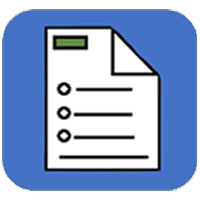Tools and Trainings
Visit the training website.
The USU Restoration Consortium has partnered with the NRCS West National Technology Support Center and the BLM Aquatic Resources Program to develop a standardized Low-Tech Process-Based Restoration training series. These courses are pending incorporation into AgLearn and DOI Talent. Students will also receive continuing education units (CEUs) and a professional transcript from Utah State University.
Access the training.
With this training we have the opportunity to learn about Native History in the US, and the resulting trust responsibility of the federal government as a byproduct of colonization. The training then dives into Tribes present day, where sovereignty and self-determination are explored and the third module leads us into culture and identities of Indigenous Peoples across what is now known as the US, with a learning objective to “offend Natives 50% less of the time AND engage with tribes 25% more effectively!” Training background and content summary from the Nature Conservancy.
Access online training modules.
Learn how ESCAPE (WUI Fire Evacuation and Sheltering Considerations — Assessment, Planning, and Execution) provides crucial guidance for wildfire evacuation planning, enhancing life safety for civilians and first responders.
Access training videos.
This virtual- and field-based training was developed and hosted by the Oak Woodlands & Forests Fire Consortium, Lake States Fire Science Consortium, and the Huron-Manistee National Forests. The virtual event was held June 1-4, 2021, and introduced participants to:
- tools for selecting metrics that match management/restoration objectives;
- developing site-specific protocols for sampling;
- developing a monitoring handbook and monitoring protocols/program for your local ecosystems;
- how to establish long-term monitoring and quantitative/qualitative data for wildfire risk assessment;
- evaluating the need for prescribed burns and other fuels treatments.
Visit website.
Technical transfer requires significant time, skills, and expertise, which are rarely explicitly taught or supported. Thus, many people engage in technical transfer with limited capacity or resources. Led by the Institute for Natural Resources and the Intermountain West Joint Venture, the Sagebrush Technical Transfer Network seeks to equip those who support others in using technical information with resources, training, and a professional network to support and strengthen their technical transfer work.
Who: This training course was developed in concert with Society for Ecological Restoration and BLM’s National Training Center. It is available to restoration practitioners within the DOI and our partners. Target Audience: Natural Resource Specialists, Fire, Fuels, Emergency Stabilization and Rehabilitation, Botanists, Wildlife Biologists, Ecologists, Range, Minerals, Mining and Reclamation
What: This self-paced on-line course is intended to serve as an introduction to seed technology and arid and semi-arid lands restoration as a first step towards more in-depth in person restoration and revegetation courses. It provides world-class training on restoring dry land ecosystems, which are critical resources in tackling the climate crisis. By the end of the course, participants will have an understanding of: Ecological restoration principles, standards of practice, and concepts to increase the success of restoration efforts, arid/semi-arid ecosystems and the challenges they pose to successful restoration, and how to apply ecological restoration best practices and concepts in restoration planning in arid and semi-arid ecosystems.
Where: Request an account here eDOI and search for: Arid and Semi-Arid Lands Seed Technology and Restoration.
The course consists of the following modules/lessons. Each are accessed separately and must be taken in sequential order.
Module 1: Introduction
Module 2: The National Seed Strategy
Module 3: Principles, Standards and Concepts
Lesson 3.1: Principles and Standards for the Practice of Ecological Restoration
Lesson 3.2: Principles, Standards and Concepts – Native Seed Standards
Module 4: Arid and Semi-Arid Systems
Lesson 4.1: Overview of Drylands
Lesson 4.2: Restoration Challenges
Lesson 4.3: Current Knowledge
Module 5: Developing and Implementing a Restoration Plan
Introduction
Lesson 5.1: Project Context
Lesson 5.2: Vision, Goals, and Objectives
Lesson 5.3: Plant Materials Selection and Procurement
Lesson 5.4: Site Preparation
Lesson 5.5: Developing and Implementing Seeding and Planting Strategies
Lesson 5.6: Monitoring and Management
Lesson 5.7: Putting It All Together
Access the tool.
Neighborhoods at Risk is an easy-to-use website with interactive maps, charts, and resources to help communities identify neighborhoods that may be especially vulnerable to wildfire, flooding, and extreme heat of climate change.
It is free to use and available for every community, county, and state in the nation.
View brief and access the tool.
Livestock grazing is a common use of rangelands that can be managed to support rangeland health, including the wide array of ecosystem services that benefit society from public lands and private lands. This requires careful allocation of naturally occurring forage on large landscapes for both domestic and wild herbivores. Managers know grazing can sustain rangeland health as long as they time it right and balance the duration, frequency, and intensity of the grazing. However, forage production on a single area or landscape varies significantly from year to year, which, until recently, has limited the accuracy of data available to managers when they make decisions about grazing.
Access the resources.
Virtual fence (VF) has the potential to revolutionize grazing systems by allowing dynamic control of livestock distribution and duration. The system uses invisible barriers, established by Global Positioning System (GPS) coordinates, to influence livestock movement with a combination of auditory and electrical cues without a physical fence. However, it can be also be complicated and expensive.
This digital guide was created to empowers ranchers and land managers to effectively evaluate and use VF for improved rangeland management. Explore the foundations of VF factsheets, watch the videos, access geospatial resources, and explore handouts from workshops and webinars to better understand a VF system.
Access tool.
Explore past and present landscapes from the Great Plains to the Pacific coast. This easy-to-use map uses historic and current aerial imagery to highlight how our landscapes have changed since the mid-20th century and how we can conserve our natural heritage.
Uses of the tool highlighted by Intermountain West Joint Venture.




